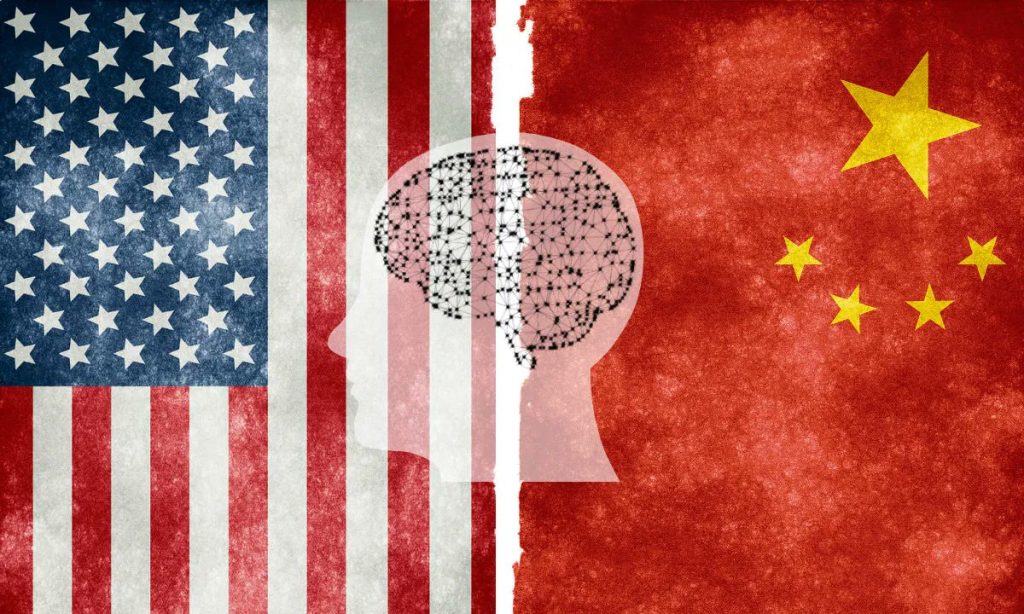The artificial intelligence sector in China has entered a new phase intensifying AI competition with the United States, as Chinese megacities launch massive subsidy programmes. At the same time, domestic firms are hoping to reduce their dependence on US technology. The stakes extend far beyond technological supremacy, with both nations viewing AI dominance as critical to future economic and strategic power.
Shanghai’s US$139 million AI investment gambit
Shanghai has unveiled an ambitious one billion yuan (US$139 million) subsidy programme for its artificial intelligence industry, marking the latest in the technological race as major cities in China engage in fierce AI competition for dominance.
The comprehensive package allocates resources in three key areas: 600 million yuan for computing power subsidies, 300 million yuan for third-party AI model discounts, and 100 million yuan to support companies in procuring training datasets.
The programme offers subsidy rates ranging from 10% to 100% of contract values for computing facilities, AI models, and datasets, according to documents released by the Shanghai Municipal Commission of Economy and Informatisation. The city plans to offer up to 500 million yuan to new AI research institutions, with funding guaranteed for three to five years.
“One of Shanghai’s key advantages in AI development is its strong funding,” said Pan Helin, a member of an expert committee under China’s Ministry of Industry and Information Technology. However, Pan noted that Shanghai’s high operating costs often push AI start-ups toward cheaper alternatives like nearby Hangzhou.
Nationwide competition heats up
Shanghai’s initiative reflects a broader pattern in China, where cities are competing aggressively to establish AI dominance in what has become an intense inter-city competition. Hangzhou has emerged as a particular rival, having announced plans last year to distribute 250 million yuan in computing power subsidies while nurturing its “six little dragons” – a collection of well-known Chinese start-ups, including AI player DeepSeek.
The inter-city rivalry extends beyond Shanghai and Hangzhou, with Shenzhen, Chengdu, and Beijing also introducing similar support measures. This situation demonstrates how artificial intelligence has become a strategic priority at multiple levels of Chinese government – domestic AI competition in China.
Trump’s AI strategy maintains pressure
The timing of Shanghai’s announcement coincides with the Trump administration’s comprehensive AI Action Plan, unveiled on July 23. The 28-page strategy maintains tight restrictions on key technologies while accelerating deregulation and infrastructure support for US AI companies.
Donald Trump described the plan as “a policy of the United States to do whatever it takes to lead the world in artificial intelligence,” emphasising America’s intention to become an “AI export powerhouse” and maintain national security protections.
The plan tasks the US Commerce Department with closing loopholes in current export restrictions, boosting oversight of end users abroad, and a plan to explore geolocation tools to block access to “countries of concern” like China.
China’s self-reliance strategy shows results
Despite US restrictions, analysts predict significant growth for China’s domestic AI industry. Bernstein analysts led by Lin Qingyuan forecast that domestic chips will capture 55% of China’s AI accelerator market by 2027, up dramatically from just 17% in 2023.
“Export controls have created a unique opportunity for domestic AI chip vendors, as they are not competing with the most advanced global alternatives,” the Bernstein research note said.
The growth reflects ongoing technological progress, with Chinese companies increasingly matching the performance of downgraded chips sold to China. Huawei’s Ascend 910C now reaches approximately 65% of Nvidia’s supreme H100 capacity, though its computing power remains limited by lack of direct compatibility with Nvidia’s CUDA software platform.
Geopolitical implications and future outlook
Bo Zhengyuan of Plenum, an independent China-focused research platform, argues that Trump’s approach represents a shift from Biden’s containment strategy to more direct competition. “So far, the ‘yard’ hasn’t gotten any smaller,” Bo noted, according to a South China Morning Post article, referring to export control scope. “What’s different is the rhetoric – it’s now more head-to-head than containment.”
The AI competition between China and the US appears set to intensify further, so much so that at the World Artificial Intelligence Conference in Shanghai, Premier Li Qiang called for international cooperation to ensure AI does not become an “exclusive game” accessible only to a select few – a clear reference to US restrictions.
However, neither US pressure nor Chinese subsidies guarantees clear winners in this technological race. “AI isn’t something that can be built overnight through policy support alone – it’s a long game shaped by engineering, talent, and infrastructure,” Bo said.
With China’s data resources, algorithms, and AI talent remaining competitive with the US despite chip restrictions, the outcome of this technological competition may ultimately depend on which approach – American technological restrictions or Chinese self-reliance investments – proves more effective in driving innovation.
“There won’t be a clear winner or loser in the next decade,” Bo concluded, suggesting that this technological rivalry will define the AI landscape for years to come.
See also: Ren Zhengfei: China’s AI future and Huawei’s long game

Want to learn more about AI and big data from industry leaders? Check out AI & Big Data Expo taking place in Amsterdam, California, and London. The comprehensive event is co-located with other leading events including Intelligent Automation Conference, BlockX, Digital Transformation Week, and Cyber Security & Cloud Expo.
Explore other upcoming enterprise technology events and webinars powered by TechForge here.

